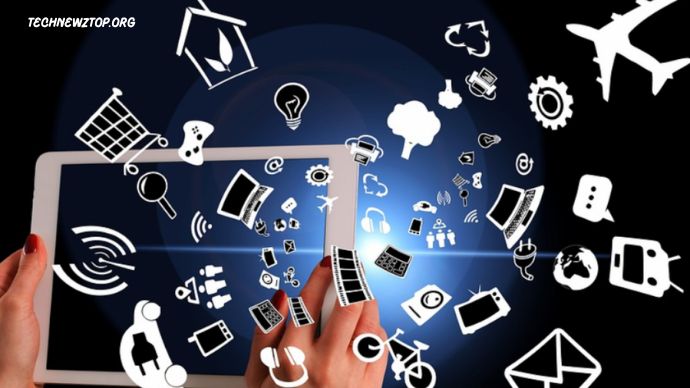https://isohitech.com/ Machines have come a long way from simple tools to complex, intelligent entities that permeate every aspect of our daily lives. In this article, we will explore the evolution of machines, their impact on society, future trends, and the challenges they bring.
I. Introduction
A. Definition of Machines
Machines, in their broadest sense, are devices designed to perform specific tasks, often with minimal human intervention. These can range from simple tools to highly sophisticated systems powered by artificial intelligence.
B. Significance in Modern Society
https://mikeshoppingroom.com/ In today’s interconnected world, machines play a pivotal role in shaping our daily experiences. From the way we work to how we communicate, machines have become indispensable.
II. Evolution of Machines
A. Historical Overview
The journey of machines traces back to ancient times, with the invention of simple tools like levers and pulleys. Over centuries, technological advancements led to the development of more complex machines, revolutionizing industries and societies.
B. Technological Advancements
The 19th and 20th centuries witnessed unprecedented technological leaps, from the industrial revolution to the digital era. This rapid progress paved the way for machines capable of intricate computations and autonomous decision-making.
III. Types of Machines
A. Simple Machines
Simple machines, such as inclined planes and levers, form the foundation of mechanical systems. They are the building blocks upon which more sophisticated machines are constructed.
B. Complex Machines
Modern technology has given rise to complex machines like computers and advanced manufacturing systems. These machines integrate various components to perform intricate tasks efficiently.
C. Specialized Machines
In today’s specialized industries, machines are custom-designed for specific purposes, enhancing precision and productivity.
IV. Impact of Machines on Daily Life
A. Automation and Efficiency
The advent of machines has automated many labor-intensive tasks, improving efficiency and freeing up human resources for more creative endeavors.
B. Job Market Changes
While machines have created new opportunities, they have also led to shifts in the job market, requiring adaptability and upskilling.
C. Ethical Considerations
The ethical implications of machines, particularly in decision-making processes, raise questions about responsibility and accountability.
V. Future Trends in Machine Technology
A. Artificial Intelligence and Machine Learning
Advancements in artificial intelligence (AI) and machine learning (ML) are propelling machines into realms of unprecedented intelligence and adaptability.
B. Robotics
The integration of robotics in various industries, from manufacturing to healthcare, promises enhanced efficiency and precision.
C. Integration with Daily Life
https://incomepultrusion.com/ The future envisions machines seamlessly integrated into our daily routines, simplifying tasks and providing personalized experiences.
VI. Challenges and Concerns
A. Security and Privacy
As machines become more interconnected, the need for robust security measures to protect personal data becomes paramount.
B. Environmental Impact
The manufacturing and disposal of machines contribute to environmental concerns, necessitating sustainable practices.
C. Ethical Dilemmas
The ethical challenges of creating machines capable of autonomous decision-making require careful consideration and regulation.
VII. Benefits of Machines
A. Improved Productivity
Machines have significantly increased productivity in industries, leading to economic growth and development.
B. Medical Advancements
In healthcare, machines contribute to groundbreaking research, diagnostics, and life-saving treatments.
C. Space Exploration
Machines play a crucial role in space exploration, extending human reach beyond Earth’s boundaries.
VIII. The Relationship Between Humans and Machines
A. Collaboration in Workplaces
In modern workplaces, humans and machines collaborate, leveraging each other’s strengths to achieve optimal results.
B. Emotional Attachment to Machines
The increasing integration of machines in our lives raises questions about emotional connections and dependency.
IX. Notable Examples of Innovative Machines
A. Smart Devices
From smartphones to smart home systems, innovative machines enhance convenience and connectivity.
B. Advanced Manufacturing Machines
Automated manufacturing systems improve precision, speed, and overall production quality.
C. Autonomous Vehicles
The rise of autonomous vehicles exemplifies the fusion of technology and transportation.
X. Machines in Popular Culture
A. Depictions in Movies and Literature
Popular culture often reflects societal perceptions of machines, portraying them as both saviors and potential threats.
B. Influences on Public Perception
Media representations shape public attitudes towards machines, influencing acceptance and apprehension.
XI. The Role of Machines in Education
A. Technological Integration in Learning
Machines play a vital role in education, facilitating interactive learning experiences and skill development.
B. Skills Development for the Future
Educational initiatives focus on preparing individuals for a future where machine collaboration is integral.
XII. The Ethical Landscape of AI in Machines
A. Responsible AI Development
Stakeholders emphasize the need for responsible AI development to ensure ethical and fair machine behavior.
B. Ethical Decision-Making in Machines
The challenge lies in programming machines to make ethical decisions, balancing societal values and individual rights.
XIII. The Role of Machines in Health Care
A. Medical Diagnostics and Treatments
Machines contribute to accurate medical diagnostics and innovative treatments, revolutionizing healthcare.
B. Surgical Robots
Robotic systems assist surgeons in performing intricate procedures with precision and minimal invasiveness.
XIV. How to Safely Use and Interact with Machines
A. Security Measures
Practicing cybersecurity is crucial to protect personal information and prevent unauthorized access.
B. Responsible Usage
Users must understand and adhere to guidelines to ensure the safe and responsible use of machines.
XV. Conclusion
A. Recap of the Impact and Evolution of Machines
Machines have evolved from simple tools to sophisticated entities, shaping societies and economies.
B. The Future Landscape
As technology advances, the symbiotic relationship between humans and machines will continue to redefine how we live and work.

